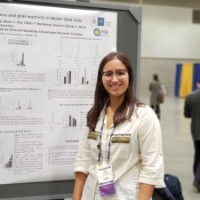Inflammation, oxidative and nitrosative stress are involved in Neovascular Retinopathies (NR). Nitro-fatty acids are electrophilic signaling mediators with anti-inflammatory and cytoprotective properties. Here, we hypothesized that Nitro-oleic acid (NO2-OA) can be beneficial for retinal cells in NR. For this, we used the Oxygen-Induced Retinopathy model. Briefly, C57BL/6 mice were exposed to 75% O2 from P7 to P12, after that they were brought to room air (RA) for additional five (P17) days. Age-match mice in RA were used as controls. Some OIR mice were i.o. injected at P12 with 5 μM of NO2-OA and i.p. at P14 with 15 mg/Kg of NO2-OA. At P17 mice were sacrificed. Retinas were used for microscopy and Western blot or RT-PCR assays. The NO2-OA biological activity was also assessed at P12 RA. Finally, the NO2-OA effect on neovascularization was evaluated by tube formation assay. GraphPad Prism was used for statistical analysis. The NO2-OA induced vascular regrowth, decrease neovascularization and produced significant changes in GS and GFAP at P17 OIR. RT-PCR revealed a significant increase in VEGF levels in OIR mice respect to RA mice, but not difference between NO2-OA treatment respect to vehicle at P17. Finally, a significant decrease in the total segment length and number of tubular structures was observed after NO2-OA treatment. These findings suggest that NO2-OA could be beneficial or cytoprotective for retinal cells in NR.
P#47
NO2-OA prevents neovascularization and induces vascular regrowth in Oxygen-Induced Retinopathy
María Victoria Vaglienti
- Córdoba,
- Argentina
- María Victoria Vaglienti ¹
- , Paula Virginia Subirada ¹
- , María Belen Joray ²
- , María Constanza Paz ¹
- , Pablo Federico Barcelona ¹
- , Gustavo Bonacci ¹
- , María Cecilia Sánchez ¹
- 1 Departamento de Bioquímica Clínica- CIBICI-CONICET- FCQ, UNC.
- 2 IRNASUS-CONICET-UCC

